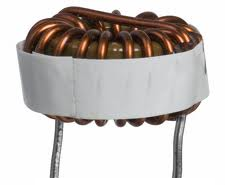Inductor Specifications
DC Resistance (DCR)

The DC Resistance (DCR) specification of an inductor is the amount of resistance that an inductor has for signals with frequencies of or near 0Hz.
Inductors are devices that allow DC signals to pass through without almost any impediment, but which block the passing of high-frequency signals. Inductors have very low resistance for low-frequency signals, while displaying very high resistance for signals with high frequencies.
The DCR of an inductor is normally very small, ranging from less than 1/100 of 1Ω to a few ohms (usually no greater than 4Ω). The smaller inductor values normally have a lower DCR, while the larger inductor values have a higher one.
The DCR of an inductor is measured using DC current. DC current is fed into the inductor and then the resistance can be calculated from the voltage and current in the circuit using R=V/I.
The DCR is meant to be minimized in the design of an inductor, meaning it is designed to be kept low. Inductors are not made
to block DC signals, so they should have a low DCR. The DCR value in a datasheet is specified as a maximum rating, meaning the value
specified in the datasheet is the maximum resistance that it will contain. The DC resistance of the inductor should not exceed the
DCR specified.
